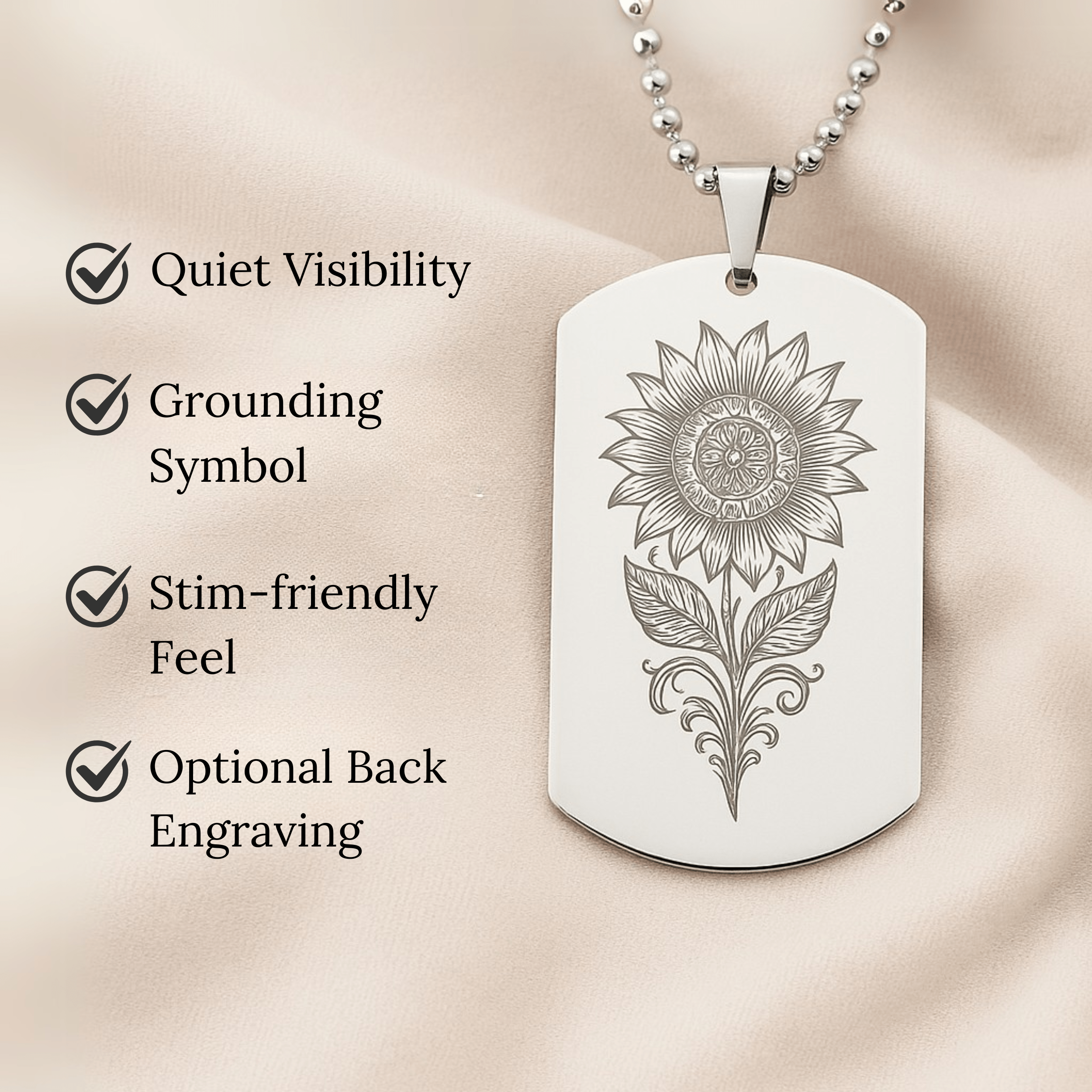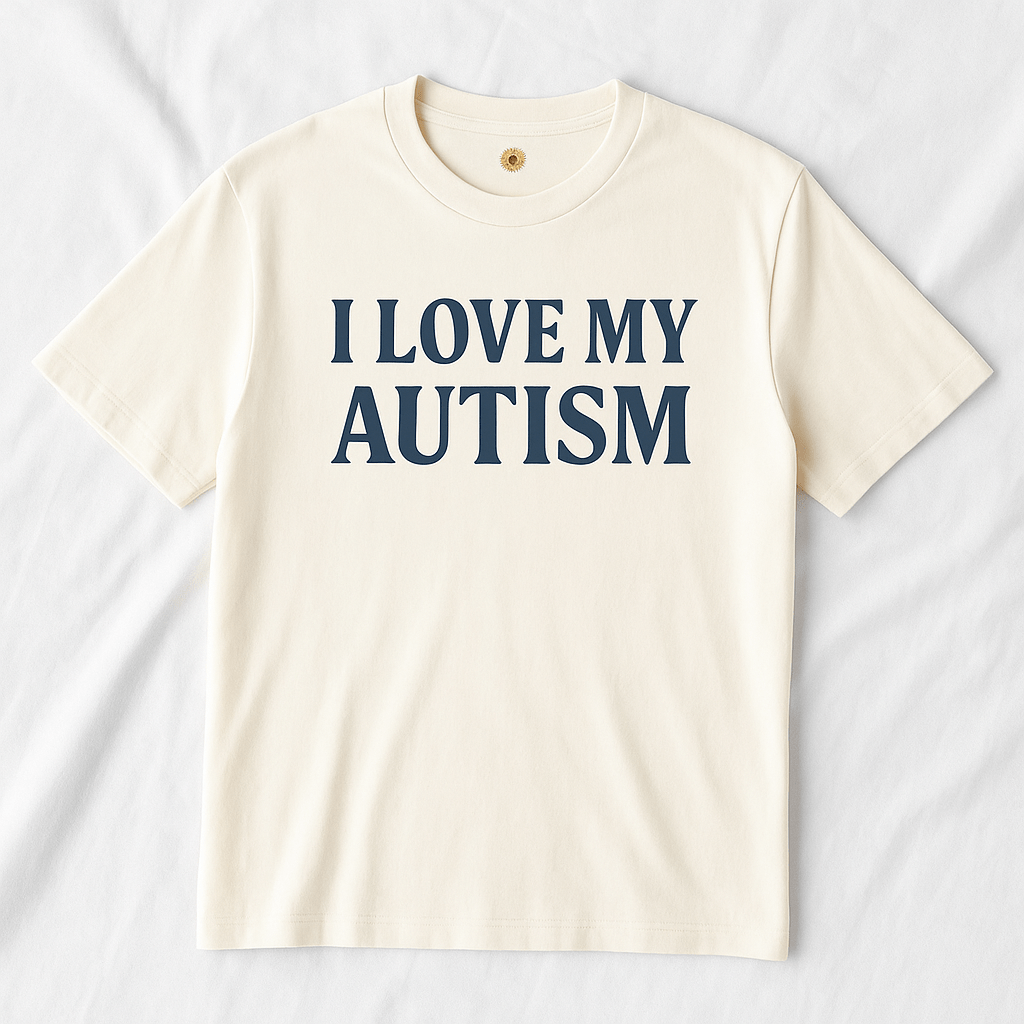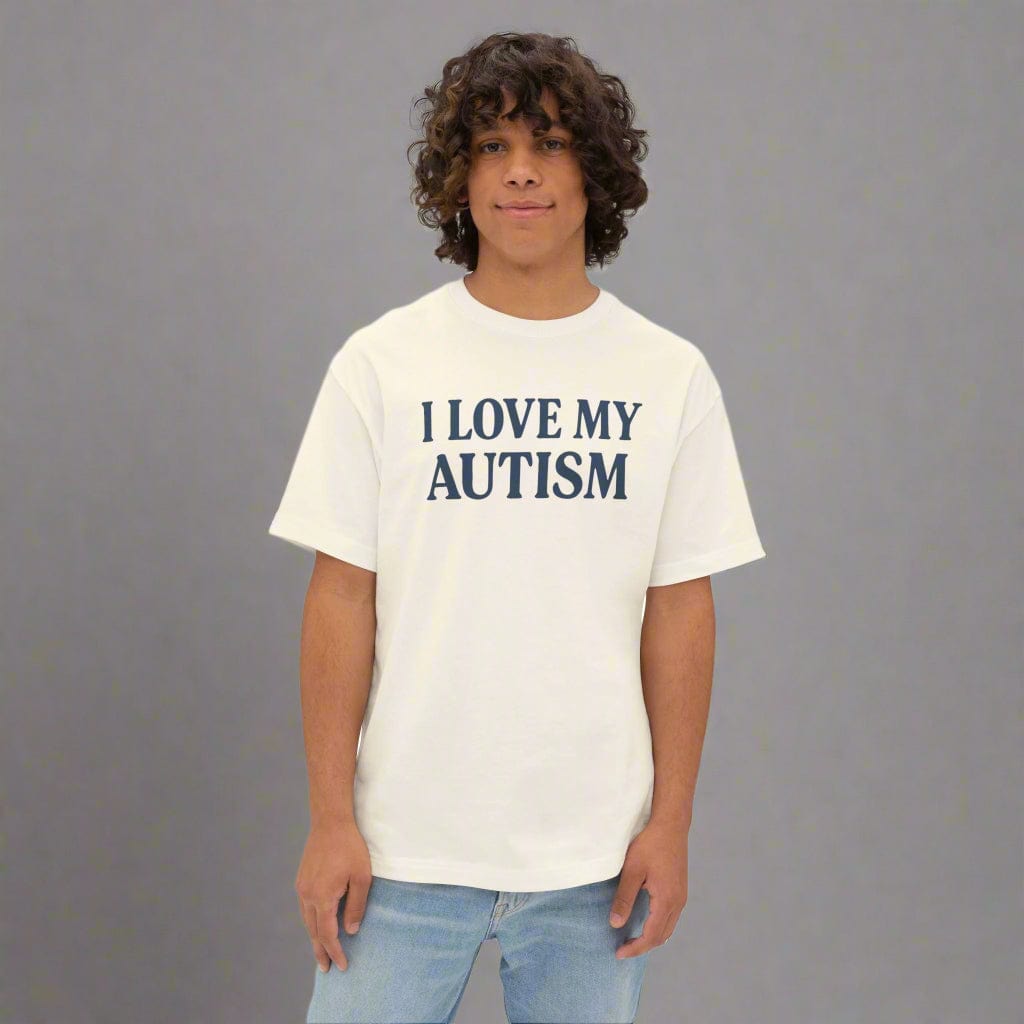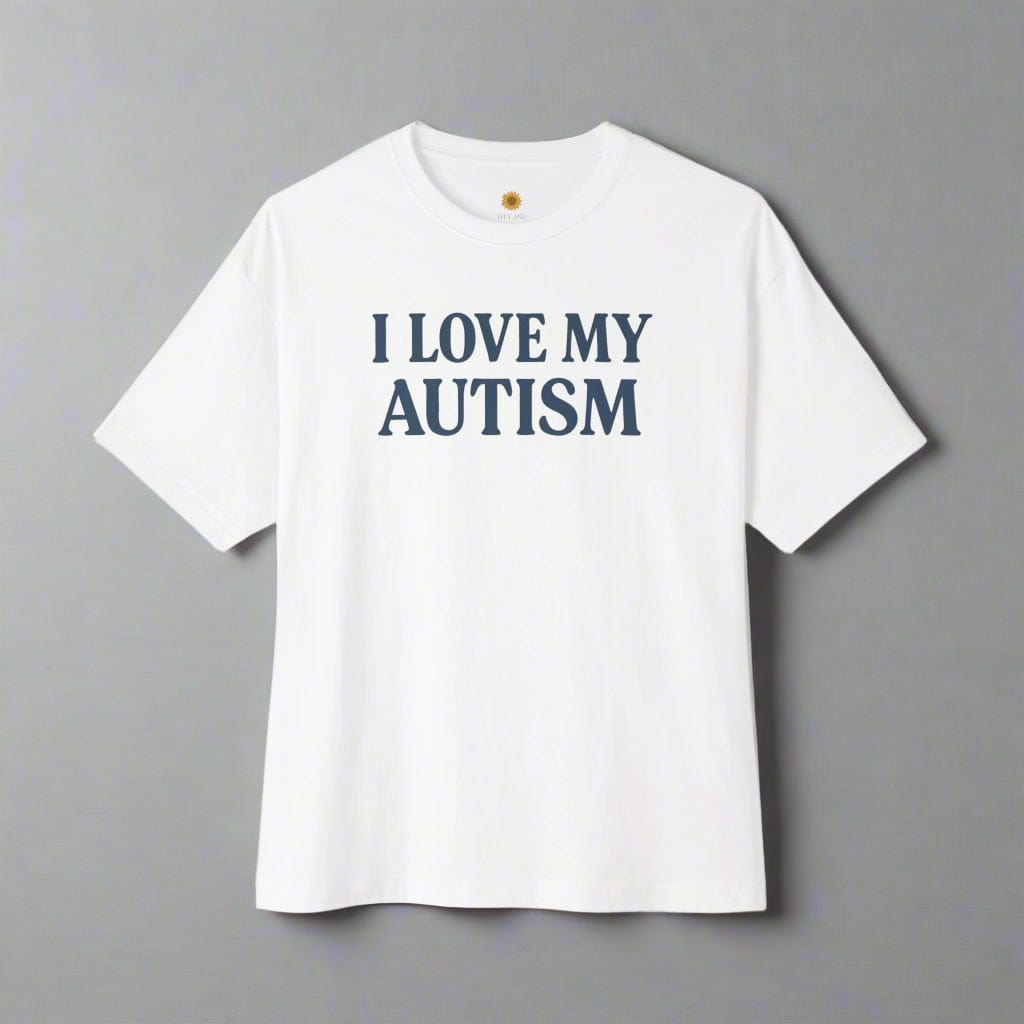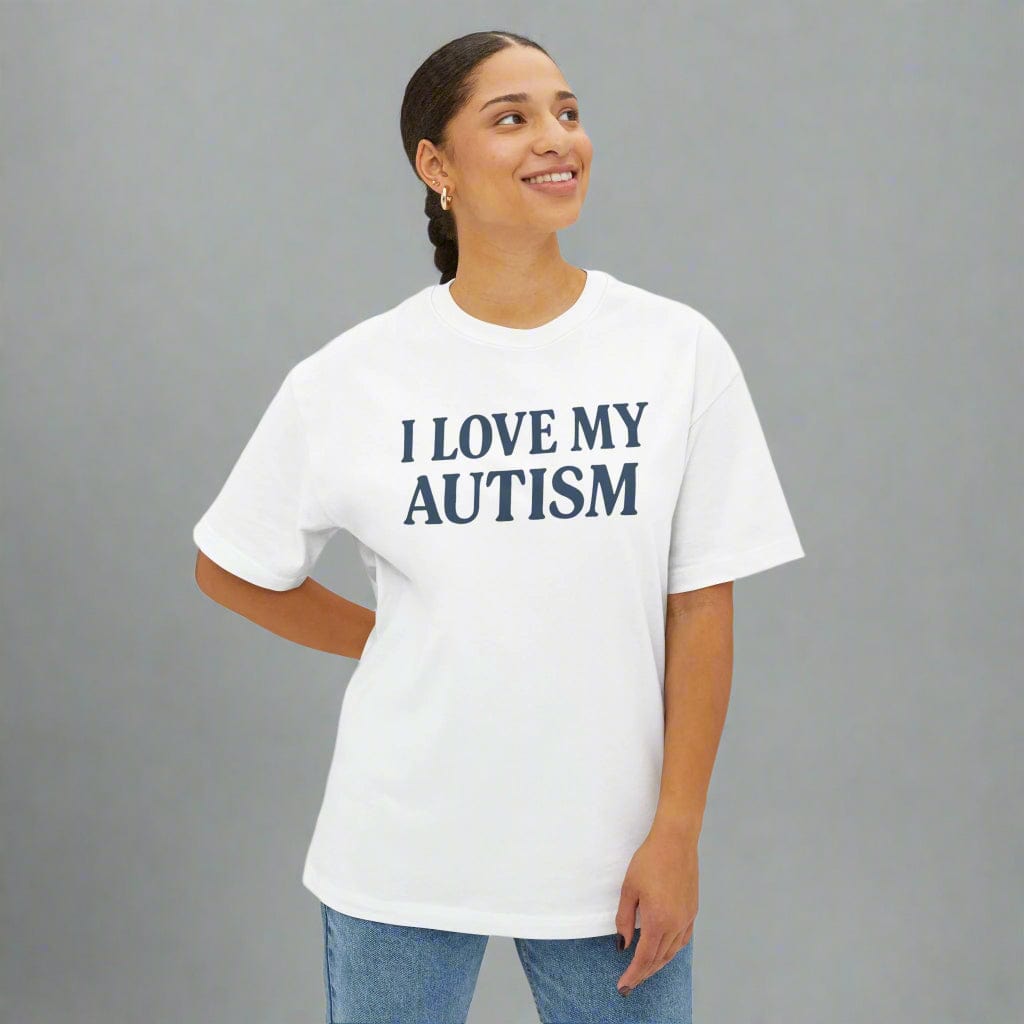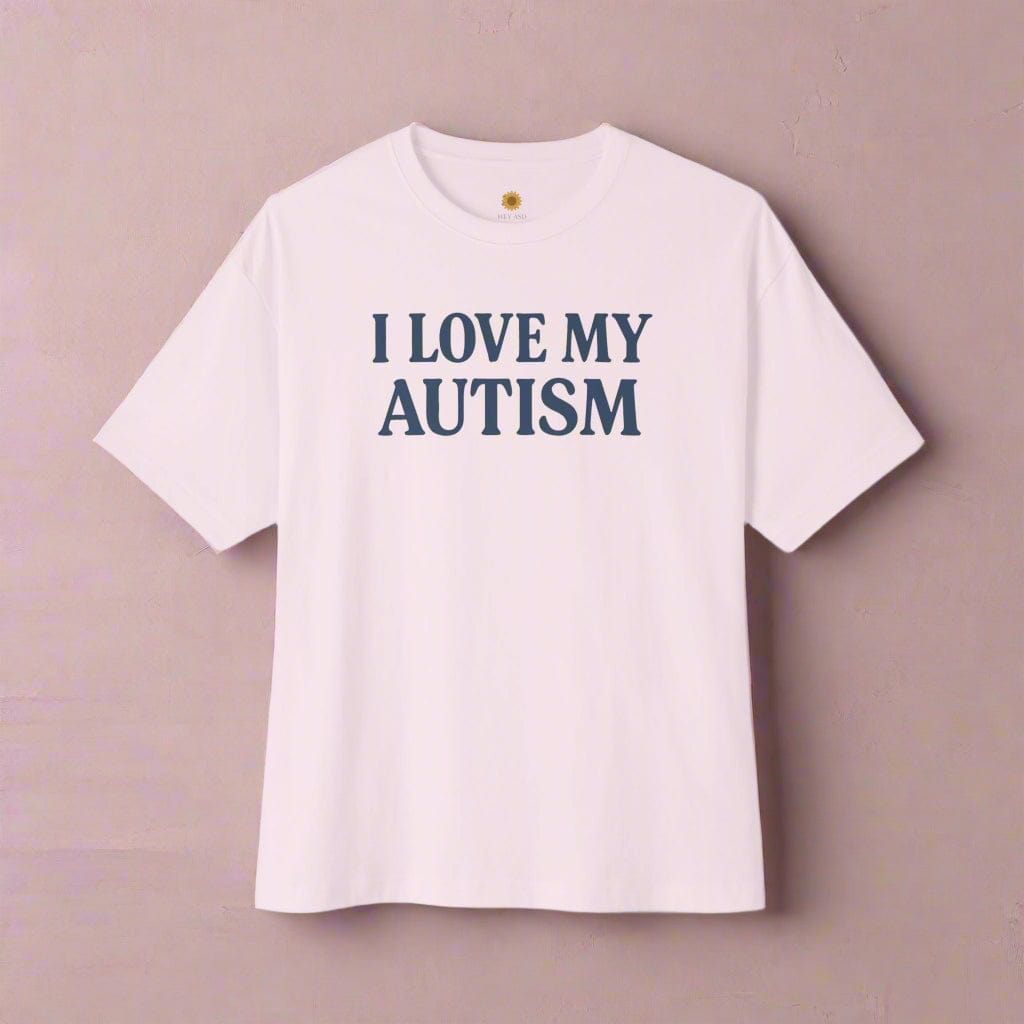Alexithymia and Autism: Understanding Emotions When You Can’t Feel Them Clearly

Written by the HeyASD Editorial Team
Have you ever thought, “I know I’m upset, but I don’t know what I feel,” or felt emotionally numb, like you’re watching your own life from a distance? Many autistic adults know this feeling well. The struggle to recognize and describe emotions is known as alexithymia — and it’s far more common than most people realize. Research suggests that up to half of all autistic people experience it. If this sounds familiar, you’re not broken or emotionless; you simply experience emotions differently. Understanding that is the first step toward compassion for yourself and greater emotional clarity.
What Is Alexithymia?
Alexithymia is a personality trait, not a mental health condition, defined by challenges in recognizing and verbalizing your own emotions. It’s not that you don’t have feelings; rather, it’s a struggle to translate those internal sensations into understandable words. Many people with high levels of alexithymia find their emotions feel like static instead of clear signals.
This difficulty often overlaps with interoception, which is your ability to recognize internal body signals like a racing heart or a tense stomach. Understanding what alexithymia is can be the first step toward better navigating your emotional world and improving your mental health, especially if you have an autism diagnosis. The following sections explore this connection in more detail.
Defining Alexithymia in Everyday Language
The term alexithymia comes from Greek words meaning “a lack of words for emotions.” In simple terms, it means you have trouble putting your feelings into words. This isn't a feature of autism itself, but it is a very common co-occurring trait. It’s about a difference in how you process your own emotions, not an absence of them.
This experience can show up in a few key ways. You might have difficulty identifying what you are feeling or struggle to tell the difference between an emotion and a physical sensation, like confusing anxiety with a stomachache. Describing feelings to others can feel impossible, and your thinking style might focus more on external events rather than your inner world.
It's a common misconception that these emotional symptoms of autism are part of the core condition. However, research increasingly shows they stem from alexithymia. Recognizing this can be incredibly validating and shift your understanding of yourself.
The Relationship Between Alexithymia and Emotional Awareness
Strong emotional awareness depends on your ability to notice and understand what's happening inside you. Alexithymia directly impacts this by creating a disconnect between feeling an emotion and consciously recognizing it. Think of emotions as energetic shifts in the body; if you have trouble perceiving those shifts, identifying what you feel becomes much harder.
This is why alexithymia can make it significantly more difficult for autistic people to identify their emotions. The internal signals might be weak or confusing, making emotional processing a tough task. Instead of a clear label like "sadness" or "joy," you might just feel a vague sense of unease or a general physical discomfort.
This ongoing challenge can affect your mental well-being, as unchecked or misunderstood emotions can contribute to anxiety and stress. While not a mental health condition itself, alexithymia is an important factor in the emotional lives of many autistic people.
How Interoception Links to Alexithymia
Interoception is often called our eighth sensory system. It’s your ability to perceive internal signals from your body, such as hunger, thirst, pain, and a changing heart rate. Crucially, emotions are also tied to these bodily sensations. A feeling of fear might come with a rapid heart rate, while happiness could feel like a lightness in your chest.
Alexithymia can be thought of as a direct result of poor interoception. If you struggle to notice or interpret these internal body signals, you will naturally have a hard time identifying the emotions connected to them. Many autistic people report having poor interoception, which helps explain why scores on an alexithymia scale are often high in the autistic community.
By tuning into your bodily sensations, you can start to build a bridge back to your emotions. For instance, noticing that you clench your jaw when frustrated is a tangible clue. This body-first approach is a key strategy for navigating alexithymia.
Myths About Feeling Emotions
A harmful myth suggests that autistic people lack empathy. However, research increasingly points to alexithymia, not autism, as the source of these perceived differences. Studies show that when you account for alexithymia, the empathic brain responses of autistic and non-autistic people are the same.
The difficulty isn't a lack of feeling for others; it's a challenge with the cognitive side of emotional processing. This is known as the "alexithymia hypothesis," which suggests many emotional difficulties attributed to autism are actually due to co-occurring alexithymia.
Here’s what the research has found:
-
Empathy: Differences in empathic responses are linked to a person's level of alexithymia, not their autism.
-
Facial Expressions: Trouble recognizing emotional facial expressions is also predicted by alexithymia, not autism.
-
Vocal Emotions: Similarly, difficulty identifying emotion in someone's tone of voice is tied to alexithymia.
Understanding Alexithymia in Autism
The connection between alexithymia and autism spectrum disorder is strong and significant. Autistic individuals are far more likely to experience alexithymia than the general population. This high rate of overlap has caused a great deal of confusion, leading to harmful stereotypes about autistic emotional capacity.
Understanding this link is empowering. It helps separate what is an autistic trait from what is an alexithymia trait. The following sections will clarify why this overlap is so common, what the differences are, and how this knowledge can change the way you see yourself.
Why Alexithymia Is Common Among Autistic Adults
Yes, autistic adults are much more likely to have high levels of alexithymia. Researchers have proposed a few reasons for this. One leading idea is the "alexithymia hypothesis," which suggests that the emotional processing difficulties often seen in autism are not a core feature of autism itself but stem from co-occurring alexithymia.
Genetics may play a role, with some theories suggesting a shared vulnerability to atypical brain connectivity that can result in autism, alexithymia, or both. Environmental factors are also significant. For some, alexithymia can develop as a defense mechanism against trauma or an environment where expressing emotions was unsafe or discouraged.
Years of masking, or hiding your autistic traits to fit in, can also lead you to become disconnected from your inner world. This constant effort can impact your mental health and make it harder to access and understand your true feelings.
Overlapping Traits: Alexithymia and Autism Explained
Many traits that people assume are part of autism are actually better explained by alexithymia. For example, the stereotype of an autistic person who struggles with empathy or can't read facial expressions is often describing someone who is both autistic and has alexithymia. This has created a lot of confusion and led to a narrow, inaccurate view of what it means to be autistic.
Think about common portrayals of autism in media, like Sheldon Cooper or Dr. Shaun Murphy. These characters often display severe alexithymic traits alongside their autistic traits. This combination has become the cultural representation of the entire autism spectrum, which is why many autistic people, especially those who don't have severe alexithymia, feel like they don't fit the stereotype.
Recognizing this overlap is key. It allows you to untangle the emotional symptoms of alexithymia from the core autistic traits you experience, leading to a more accurate and affirming self-concept.
Differences Between Alexithymia and Autism Traits
While they often occur together, alexithymia and autism are distinct. Autism is a form of neurodivergence characterized by a unique communication style, deep interests, and self-soothing through repetition and routine. Alexithymia, on the other hand, is a personality trait specifically about the difficulty in identifying and describing one's own emotions.
Many traits once thought to be essential to the autism spectrum, such as difficulty with cognitive empathy or recognizing emotions in others, are now understood to be more strongly linked to alexithymia. Researchers even suggest that the diagnostic criteria for autism should be revisited to reflect this important distinction.
Here is a table to help clarify the differences:
|
Trait / Difficulty |
Primarily Linked to Autism |
Primarily Linked to Alexithymia |
|---|---|---|
|
Need for routine and repetition |
Yes |
No |
|
Deep, focused interests |
Yes |
No |
|
Direct, literal communication style |
Yes |
No |
|
Difficulty identifying own emotions |
High Overlap |
Yes (Core Definition) |
|
Difficulty describing feelings to others |
High Overlap |
Yes (Core Definition) |
|
Trouble recognizing facial expressions |
No (once alexithymia is controlled for) |
Yes |
|
Perceived differences in empathy |
No (once alexithymia is controlled for) |
Yes |
Does Alexithymia Happen in Children, Too?
Yes, alexithymia is not just an adult experience; it is also present in autistic children and adolescents. Research using tools like the Toronto Alexithymia Scale has shown significant levels of alexithymia in younger autistic participants. One study found a prevalence rate of 55% in autistic teenagers, highlighting that these challenges often begin early in life.
Some theories suggest that alexithymia can be a lifelong trait that develops in childhood, possibly due to a combination of genetic predispositions and early life experiences. For an autistic child navigating a world not built for them, developing a disconnect from overwhelming emotions can become a coping mechanism.
Identifying alexithymia early, alongside an autism diagnosis, can be incredibly helpful. It allows parents, educators, and therapists to provide the right kind of support for a child's emotional development, focusing on building emotional literacy in a way that respects their unique processing style.
Signs of Alexithymia in Autistic Adults
Recognizing the symptoms of alexithymia in yourself is a powerful step toward self-understanding. For many autistic adults, these signs have been present for years but were misunderstood or dismissed. You might relate to the feeling that when someone asks how you feel, your mind just goes blank.
These emotional processing difficulties can manifest in different ways, from physical confusion to social challenges. Learning to spot these signs allows you to be gentler with yourself and start exploring new ways to connect with your inner world. The sections below break down some of the most common signs.
Trouble Identifying Emotions in Daily Life
A core sign of alexithymia is having consistent trouble identifying your own emotions. You might feel a strong internal shift but have no name for it. Is it anger, frustration, or sadness? The answer might be a constant "I don't know." This can make emotional regulation incredibly challenging because you can't manage what you can't identify.
This difficulty extends to the outside world, too. While research shows that the poor recognition of emotional facial expressions is linked to alexithymia rather than autism, it still impacts your daily interactions. You may misinterpret someone's expression or not notice subtle emotional cues, leading to social confusion.
Living with this uncertainty can be exhausting. It's like trying to navigate a landscape without a map. You know you are somewhere, and you know you are feeling something, but you lack the tools to get your bearings.
Reliance on Others for Emotional Feedback
When you struggle with emotional awareness, you might find yourself looking to other people to understand your own feelings. You may rely on a partner, friend, or family member to act as an emotional mirror, interpreting your moods for you. They might say, "You seem really anxious today," and you realize that's what the feeling is.
This reliance can show up in several ways. For example, you might:
-
Ask others, "Am I upset right now?" or "What do you think I'm feeling?"
-
Observe other people's reactions to a situation to figure out how you should be feeling.
-
Wait for someone else to name your behavior (like pacing or fidgeting) before connecting it to an emotion.
While external feedback can be a helpful tool, over-reliance can make it hard to build your own sense of internal trust. Mental health professionals can help you develop strategies to improve your own emotional awareness, reducing the need to constantly seek external validation for your feelings.
Confusion Between Different Feelings
Another common sign of alexithymia is the confusion of emotions that feel similar in the body. For example, the physical sensations of anxiety—a racing heart, shallow breathing, a knot in your stomach—can feel a lot like the sensations of excitement. Without a clear way to differentiate them, you might mislabel your feelings entirely.
This confusion can also happen between negative emotions. Is the tension in your shoulders from anger or from stress? Is your desire to withdraw from a situation due to sadness or overwhelming sensory input? For many autistic people, these bodily sensations blend together, creating a fog of emotional uncertainty.
This lack of clarity complicates emotional processing significantly. It makes it difficult to know what you need in the moment. Do you need comfort, space, or a solution to a problem? When you can't tell what you're feeling, you can't effectively advocate for your needs.
Physical Versus Emotional Sensations
For people with high levels of alexithymia, emotions are often experienced primarily as physical symptoms. Instead of thinking, "I feel sad," you might only notice that you have a headache, feel fatigued, or want to cry without knowing why. The emotional arousal is happening, but it's only registering on a physical level.
This can be very confusing and even alarming. You might worry that you have a physical illness when what you're actually experiencing is a strong, unnamed emotion. A tight chest could be anxiety, nausea could be disgust, and a flushed face could be embarrassment or anger. Your body is speaking, but you haven't learned its language yet.
Recognizing this pattern is a crucial step. It allows you to start treating these bodily sensations as clues. Instead of dismissing them, you can approach them with curiosity and begin to map them to the emotional experiences they represent.
Emotional Awareness Challenges in Autism
The difficulties with emotional awareness caused by alexithymia create a ripple effect, touching nearly every aspect of life for autistic people. When you can't easily identify your feelings, emotional regulation becomes a significant hurdle. This impacts everything from managing daily stress to navigating relationships.
These challenges aren't a sign of being "broken" or "cold." They are a direct result of a different style of emotional processing. The following sections will explore how these challenges manifest in specific areas, such as emotional regulation, masking, and social interactions.
How Emotional Regulation Impacts Autistic People
Emotional regulation is the ability to manage and respond to your emotional experiences. This process is incredibly difficult if you have trouble knowing what you're feeling in the first place. For autistic individuals with higher levels of alexithymia, emotions can feel like sudden, intense storms that come out of nowhere.
Without the ability to identify a feeling as it starts to build, you can't intervene with coping strategies. A small annoyance can quickly escalate into a full-blown meltdown or shutdown because you didn't recognize the warning signs. This can make everyday situations, like a change in plans, feel intensely distressing.
This constant struggle with emotional regulation is exhausting and can significantly impact mental health. It can lead to increased anxiety, as you may live in fear of your own unpredictable emotional responses. Understanding that this is tied to alexithymia, not a personal failure, can help reduce self-blame.
Struggling to Name or Describe Feelings
The phrase “a lack of words for emotions” is the literal meaning of alexithymia, and it perfectly captures this core struggle. When asked, "How do you feel?" your mind may go completely blank. You might resort to simple, vague terms like "good," "bad," or "fine" because the specific vocabulary just isn't there.
This isn't a problem of intelligence or articulateness. You might be able to discuss complex topics with ease, but the language for your inner world feels inaccessible. This is one of the most common emotional processing difficulties for autistic people with alexithymia.
This struggle to describe feelings can make it hard to get support from others. How can you explain what's wrong or what you need if you don't have the words? This can lead to feeling misunderstood and isolated, even with people who care about you deeply.
Masking Emotions and Delayed Processing
For many autistic people, masking becomes a default way to navigate social situations. When you can't identify your own emotions, you might look to others and mimic the emotional expression you think is expected. This can be a way to hide your confusion and avoid judgment. However, years of masking can deepen the disconnect from your true feelings.
Another key experience is delayed processing. An emotion might not fully register until hours, or even days, after an event. You might feel fine during a stressful meeting, only to break down in tears that evening without understanding why. This delay is a valid part of your emotional regulation style.
This emotional lag can be confusing, but accepting it is a powerful coping strategy. Giving yourself permission to feel things on your own timeline, rather than forcing an immediate response, is a form of self-compassion that can improve your emotional awareness over time.
Navigating Social Situations With Limited Emotional Vocabulary
Social situations are complex and often rely on a shared understanding of subtle emotional cues. Having a limited emotional vocabulary due to alexithymia can create significant communication difficulties and make these interactions feel like a constant test. You might struggle to express your needs, share in someone's joy, or offer comfort.
This can lead to misunderstandings where others perceive you as aloof, uninterested, or uncaring, even when you care deeply. This is not a reflection of your character but a result of your different processing style.
To better navigate these situations, you can:
-
Focus on actions: Instead of trying to find the right emotional words, you can show you care through actions, like offering practical help.
-
Use factual language: Describe the situation rather than your feelings. For example, say, "That sounds like a really difficult situation," instead of struggling to say, "I feel so sorry for you."
-
Communicate your style: Let trusted people know that you process emotions differently and may need more time or different ways to express yourself.
The Social Impact—Feeling Disconnected
The internal challenges of alexithymia often lead to external social difficulties. When you struggle to understand and express your own emotions, connecting with others can feel like a monumental task. This can result in interpersonal struggles, misunderstandings in relationship dynamics, and a painful sense of disconnection.
Many autistic people with alexithymia feel deeply but can't show it in conventional ways. You might relate to thinking, “People think I’m cold or uncaring, but I just can’t access my emotions fast enough to show them.” This section explores these social impacts and offers ways to cope.
Interpersonal Struggles With Communication
Alexithymia creates significant communication difficulties in relationships. Conversations that revolve around feelings can be baffling. When a friend is looking for emotional support, you might not know what to say or how to respond in a way that feels natural. This can make you feel inadequate or like you're always getting it wrong.
These struggles can also affect your ability to be assertive or set boundaries. If you don't realize you're feeling overwhelmed or resentful until much later, you may not speak up for your needs in the moment. This can lead to patterns of being overly accommodating or, conversely, seeming rigid and uncooperative.
Over time, these communication challenges can take a toll on your mental health, contributing to social anxiety and feelings of loneliness. It's important to remember that these are not character flaws but direct consequences of alexithymia's impact on emotional processing.
Relationship Dynamics and Misunderstandings
In relationships, alexithymia can be a frequent source of misunderstandings. Your partner might share something emotional, and your delayed or non-verbal response could be interpreted as a lack of care. They may feel that you are not emotionally present or that you do not share their empathy for a situation.
For autistic adults, this can be incredibly painful. You may be feeling a great deal internally but are unable to bridge the gap between your inner world and outer expression. You might try to show you care through practical actions, like solving a problem, when your partner is looking for emotional validation.
These differing styles can create friction in relationship dynamics. Openly communicating about your processing style is key. Explaining that you feel things deeply but express them differently can help your loved ones understand that your quietness or practical focus is not a sign of indifference.
The Role of Empathy and Expression
It's a common myth that autistic people lack empathy. Research on empathic brain responses shows this isn't true. Autistic people often feel empathy very deeply, sometimes to an overwhelming degree (emotional empathy). The difficulty lies in cognitive empathy—the ability to intellectually understand and articulate what someone else might be feeling—which is more closely tied to alexithymia.
When you have alexithymia, this can create an "empathy imbalance." You might feel someone's pain intensely but struggle to find the right words or facial expressions to convey your support. This can make you appear detached, even when you're emotionally flooded.
Here are a few things to remember about empathy and expression:
-
Feeling empathy and showing empathy are two different skills.
-
Autistic people often have heightened emotional empathy but may struggle with cognitive empathy due to alexithymia.
-
Finding alternative ways to express care, like through actions or written words, is a valid and powerful strategy.
Coping With Judgment From Others
Living with alexithymia means you have likely faced judgment from others who misunderstand your emotional style. People may have called you cold, robotic, or uncaring. This can be deeply hurtful, especially when you feel things intensely on the inside. Coping with this judgment is a crucial part of protecting your well-being.
One of the most powerful ways to cope is to find your people. Connecting with the autistic community can be incredibly validating. Sharing your experiences with others who just "get it" can reduce feelings of isolation and shame. You realize you are not alone in experiencing these emotional symptoms of autism.
Another key strategy is self-advocacy. This doesn't mean you have to explain yourself to everyone. It means choosing to educate the important people in your life about what alexithymia is and how it affects you. This can transform judgment into understanding and create safer, more supportive relationships.
Mental Health and Alexithymia in Autism
The constant effort of trying to understand your own emotions and navigate a world that doesn't understand your processing style can have a significant impact on your mental health. Alexithymia is closely linked to higher rates of anxiety, depressive disorders, and emotional burnout in autistic people.
This is not an inevitable outcome. Recognizing the connection between alexithymia and your well-being is the first step toward finding effective support. The following sections explore these links in more detail and offer strategies to protect your mental well-being.
Links With Anxiety and Depression
Alexithymia is strongly associated with a higher risk for both anxiety disorders and depressive disorders. When emotions are unnamed and unprocessed, they don't just disappear. Instead, they can build up as a constant, low-grade sense of dread, unease, or numbness, which are hallmarks of anxiety and depression.
For example, without the ability to recognize and process sadness, it can fester and transform into a depressive episode. Similarly, unnamed fear can generalize into a persistent state of anxiety. The inability to use your emotions as signals to guide your actions leaves you feeling powerless and out of control, which can be detrimental to your mental health.
If you are autistic and experience these conditions, it's vital that any mental health support you receive takes alexithymia into account. A therapist who understands this link can help you find strategies that don't rely solely on talking about feelings, which may be inaccessible to you.
Emotional Burnout and Fatigue
For autistic individuals with high levels of alexithymia, emotional burnout is a very real risk. The constant mental energy required to decipher your own internal state, analyze social situations, and mask your confusion is immense. This cognitive load, day in and day out, can lead to profound exhaustion.
Emotional arousal still happens in your body, even if you can't name it. This means you are experiencing the physiological stress of emotions without the release that comes from understanding and expressing them. Your nervous system can get stuck in a state of high alert, leading to chronic fatigue and a diminished capacity to cope with daily life.
This is often a key component of autistic burnout. It's not just about being tired; it's a state of complete emotional, mental, and physical depletion. Recognizing the role of alexithymia in this cycle can help you identify your own burnout triggers and prioritize restorative practices.
Isolation Due to Disconnect From Emotions
A deep sense of isolation is a common experience for people with alexithymia. This isolation can be twofold. First, there is an internal disconnect—a feeling of being a stranger to yourself because your emotional life is a mystery. This can leave you feeling empty or detached from your own human experience.
Second, this internal disconnect leads to external isolation. When you can't share your feelings, it's hard to build deep, emotionally intimate connections with others. You may feel like you're on the outside looking in, watching others connect in ways that feel inaccessible to you.
This profound sense of being alone, both from yourself and from others, can have a serious impact on your mental health. It highlights the importance of finding alternative ways to connect, whether through shared interests, parallel activities, or communities that understand your unique way of being in the world.
Strategies to Support Mental Well-being
Supporting your mental well-being when you have alexithymia requires a tailored approach. Traditional talk therapy that heavily relies on identifying and discussing feelings may not be effective. Instead, focusing on body-based and structured strategies can be much more helpful.
Working with mental health professionals who are knowledgeable about both autism and alexithymia is crucial. They can help you adapt therapies like cognitive behavioral therapy (CBT) to focus on behaviors and thought patterns rather than on naming emotions directly.
Here are some strategies that can support your mental well-being:
-
Mindfulness Exercises: Practice body scan meditations to build interoceptive awareness. Instead of asking "What do I feel?" ask "What do I sense in my body?"
-
Structured Journaling: Keep a log of situations, your physical sensations, and your actions. Over time, you can start to see patterns that link certain situations to specific bodily responses.
-
Creative Expression: Use art, music, or movement to express what's inside without needing words. You could even wear your favorite autism pride autism t-shirt
sto feel more connected to yourself.
Causes and Contributing Factors
There is no single cause of alexithymia, especially in the context of autism. Instead, it's understood to be the result of a complex interplay of different factors. These can include genetics, differences in sensory processing and brain connectivity, and environmental influences like trauma.
Understanding these contributing factors can provide a more complete picture of why you experience emotions the way you do. It reinforces that this is not a personal failing but a result of your unique biology and life experiences. The following sections explore these potential causes in more detail.
The Role of Genetics
There is growing evidence for a genetic link between alexithymia and autism spectrum disorder. Some researchers propose that there may be a shared genetic vulnerability that affects the development of brain networks responsible for both social communication and emotional processing. This could explain why the two traits co-occur so frequently.
Depending on the specific brain networks affected, this genetic predisposition could manifest as "pure" autism, "pure" alexithymia, or the common combination of both. This theory helps to explain the wide diversity within the autistic population regarding emotional processing abilities.
It is important to understand that genetics are not destiny. While a genetic predisposition may exist, your environment and life experiences also play a crucial role in how these traits develop and express themselves. The contribution of alexithymia to your experience is shaped by many factors, with genetics being just one piece of the puzzle.
Sensory Processing Differences
The sensory processing differences common in autistic people are deeply connected to alexithymia. This is especially true for interoception—the sense of what's happening inside your body. If your brain has trouble receiving or interpreting these internal bodily sensations, it will naturally be difficult to identify the emotions associated with them.
Neuroimaging studies suggest that alexithymia is associated with reduced activation in key brain areas involved in emotion processing, such as the insula and amygdala. Interestingly, autistic people are also known to have atypical connectivity in these same brain regions. This suggests a shared neurological basis for both the sensory and emotional challenges experienced.
Essentially, the "volume" on your internal signals might be turned down too low, or the signals might be staticky and hard to read. This makes it challenging to distinguish between different feelings or even to notice them at all until they become overwhelming.
Trauma, Masking, and Environment
Your environment and life experiences can also play a significant role in the development of alexithymia. For some, it can be a defense mechanism that arises in response to trauma. When emotions are too painful or overwhelming to bear, the brain may learn to disconnect from them as a form of protection.
Similarly, a lifetime of masking can lead to a profound disconnect from your inner self. Constantly suppressing your natural responses and performing a version of yourself that you think is more acceptable can make it nearly impossible to know what you are truly feeling. Your own emotions become buried under layers of performance.
An invalidating environment, where your emotional expressions were ignored, punished, or misunderstood, can also teach you to stop paying attention to them. This can worsen existing challenges with emotional regulation and contribute to difficulties with mental health.
Language and Communication Development
The very definition of alexithymia centers on a lack of words for emotions, so it's natural that language and communication development play a part. For some autistic individuals, difficulties with language acquisition or processing may contribute to challenges in developing a rich emotional vocabulary.
If you weren't taught the words for more nuanced feelings as a child, or if abstract concepts like "longing" or "contentment" were hard to grasp, you may have been left with only basic emotional labels. This isn't about a lack of intelligence but about a difference in how you learn and process language.
Furthermore, if you struggled to interpret non-verbal cues like emotional facial expressions, you may have missed out on key learning opportunities for connecting external signs of emotion with internal feelings. These early communication difficulties can compound over time, making it harder to build emotional literacy as an adult.
Diagnosing Alexithymia in Autistic People
Although alexithymia is not a formal diagnosis listed in the DSM-5, it can be identified and assessed by mental health professionals. For autistic people, getting this clarity can be life-changing. It provides a name for a lifelong struggle and opens the door to more effective, tailored support.
The identification process typically involves self-report tools like an alexithymia questionnaire, such as the widely used Toronto Alexithymia Scale. These assessments help measure the degree to which you experience difficulties with identifying and describing feelings. The following sections provide more detail on these tools and the diagnostic process.
Methods for Identification and Assessment
Several tools are used to assess for alexithymia. The most common are self-report questionnaires, where you answer questions about your own experiences with emotions. A systematic review of studies shows that these scales can be used reliably with autistic people.
The gold standard is the Toronto Alexithymia Scale (TAS-20), a 20-item questionnaire that is widely used in research. However, because self-reflection can be difficult for someone with alexithymia, it's often recommended to use more than one measure. This could include an observer scale, where a loved one provides their perspective.
Here are some of the common assessment tools:
|
Assessment Tool |
Description |
|---|---|
|
Toronto Alexithymia Scale (TAS-20) |
A 20-item self-report questionnaire that is the most common tool used in research. A score of 61 or higher indicates a high level of alexithymia. |
|
Bermond-Vorst Alexithymia Questionnaire (BVAQ) |
Another self-report alexithymia scale that includes questions about imagination and fantasy life, aspects not covered by the TAS-20. |
|
Observer Alexithymia Scale (OAS) |
An informant-based measure where someone who knows you well, like a partner or parent, answers questions about their observations of your emotional expression. |
Barriers to Diagnosis for Neurodivergent Folk
There can be several barriers to getting a clear identification of alexithymia, especially for neurodivergent people. The most obvious one is the paradox of self-report: asking someone who has trouble reflecting on their emotions to complete a questionnaire about their emotions is inherently tricky. Your answers might not fully capture the extent of your difficulties.
Another major barrier is the significant overlap between the traits of alexithymia and the stereotypical understanding of autism. Many clinicians may mistakenly assume that your emotional difficulties are simply a part of your autism, without exploring the possibility of co-occurring alexithymia. This can prevent you from getting the most accurate and helpful support.
Finally, a lack of awareness about alexithymia among both the public and some professionals means it's often not even considered. This highlights the need for further research and education to ensure that autistic people receive a comprehensive and nuanced understanding of their experiences.
How Professionals Approach Diagnostic Tools
A knowledgeable mental health professional will approach the identification of alexithymia with care and nuance. They understand that a score on a questionnaire is just one piece of information, not the whole story. They should use these tools as part of a broader, more holistic assessment of your experiences.
A good approach involves using multiple sources of information. This includes clinical interviews where they ask about specific examples from your life, considering the perspectives of loved ones (if you consent), and using more than one assessment tool to get a well-rounded picture.
When assessing for alexithymia, a skilled professional will:
-
Consider confounding factors like depression or anxiety, as these can also affect emotional processing.
-
Recognize the limitations of self-report and interpret the results in the context of your overall presentation.
-
Prioritize your lived experience and self-understanding over a simple numerical score.
Coping Strategies for Alexithymia and Autism
While there is no "cure" for alexithymia, there are many practical coping strategies you can use to build emotional awareness and improve your emotional regulation. The goal isn't to "fix" yourself but to learn to work with your unique emotional style. This is about building a better relationship with yourself.
These strategies focus on tuning into your body, using external tools for support, and communicating your needs to others. The following sections offer concrete, actionable ideas that you can start using today to better navigate your inner world.
Building a Body-to-Emotion Map
One of the most powerful strategies for navigating alexithymia is to build a "body-to-emotion map." Since your emotions often show up as physical sensations first, learning to decode these signals can be your gateway to better emotional awareness. This is a practical way to improve your interoception.
Start by keeping a simple journal or using an autism app on your phone. Throughout the day, take a moment to notice any strong bodily sensations. Don't try to name an emotion yet—just describe the physical feeling and the situation you were in.
Over time, you can start to connect the dots. Here's how you might start your map:
-
Tight stomach + pacing before a presentation = Anxiety
-
Clenched jaw + feeling hot after being interrupted = Anger
-
Heavy feeling in my limbs + wanting to stay in bed = Sadness or Burnout This map becomes a personalized guide to your internal body signals, helping you improve your emotional processing and regulation.
Using Visual, Symbolic, or Creative Supports
Since words for emotions can be elusive, using non-verbal tools can be incredibly helpful. Visual and symbolic supports allow you to identify and express your moods without needing a specific label. This taps into a different part of your brain and can feel much more intuitive.
An emotion wheel is a fantastic visual tool. It provides a list of words you can choose from, which can help bypass the mental block of trying to come up with one on your own. You can simply point to the feeling that seems closest to your experience.
Here are some other ideas for creative and symbolic supports:
-
Use colors: Assign different colors to different moods. You could have a set of colored cards or even wear autism hoodies or autism jewelry of a certain color to represent how you're feeling.
-
Create playlists: Curate different playlists for different emotional states (e.g., a "calm" playlist, an "angry" playlist, a "sad" playlist). Music can be a powerful way to match and process your mood.
-
Engage in art: Draw, paint, or sculpt your feelings. The act of creating can be a form of emotional release and expression in itself.
Communicating Emotional Needs With Loved Ones
Sharing emotional needs can be challenging, especially for those navigating alexithymia. Rather than feeling pressured to articulate emotions instantly, discuss physical sensations or situations that may be causing discomfort. This approach allows for clearer communication without the immediate pressure of labeling emotions. Encourage loved ones to listen without judgment, creating a safe space for exploration. Using affirming phrases can be helpful: “I’m still figuring this out” or “Please give me a moment.” Building this understanding fosters a deeper connection and demonstrates that emotional experiences are valid, even if they’re hard to express.
Key Takeaways: Alexithymia and Autism
- Alexithymia is the difficulty identifying and describing emotions — not a lack of emotion itself.
- It’s common in autistic adults and linked to interoception, our sense of internal body signals.
- Many emotional challenges attributed to autism are actually related to co-occurring alexithymia.
- Body mapping, creative outlets, and delayed emotional processing are valid and effective coping tools.
- Self-acceptance and gentle awareness are more powerful than trying to “fix” your emotions.
Conclusion
Living with alexithymia as an autistic person can feel like trying to read a language that doesn’t have words. But the truth is, you do feel — deeply. You just sense emotions through a different channel. Learning to tune into your body, create emotional structure, and express yourself in alternative ways is not about “fixing” anything; it’s about building connection on your own terms. Give yourself permission to take time, to be curious, and to move gently toward understanding what you feel. You are not alone in this — there is nothing wrong with your emotional language; it’s simply written in a different script.
Find Calm in the Chaos
Explore our Sensory Regulation Collection; sensory-friendly t-shirts, soothing décor, and comforting designs made to help you reconnect with yourself when words fall short.
Explore the CollectionFrequently Asked Questions
Here are some of the most common questions autistic adults ask about alexithymia.
Are autistic people more likely to experience alexithymia?
Research indicates that autistic individuals are more prone to alexithymia, which affects their ability to identify and articulate emotions. This connection may hinder their emotional communication, making it essential for loved ones to understand and support their unique emotional landscape.
How can caregivers or friends support someone with alexithymia?
Caregivers and friends can support someone with alexithymia by being patient and open in communication. Encouraging them to express their feelings through writing or art, validating their experiences, and providing a safe space for emotional exploration can foster understanding and connection.
Can emotional insight improve for autistic adults with alexithymia?
Yes, emotional insight can be enhanced for autistic adults with alexithymia through therapeutic interventions. Techniques like mindfulness, cognitive-behavioral therapy, and emotion-focused strategies can help individuals recognize and express their emotions more effectively, fostering better communication and relationships with loved ones.
What are the key characteristics of alexithymia, and how does it relate to autism?
Key characteristics of alexithymia include difficulty identifying and expressing emotions, a lack of emotional awareness, and challenges in interpersonal relationships. In individuals with autism, these traits can amplify the struggle to communicate emotional needs effectively, impacting social interactions and relationships.
How can individuals with alexithymia improve their emotional awareness and expression?
Individuals with alexithymia can enhance emotional awareness by practicing mindfulness, journaling feelings, and seeking therapy. Engaging in open conversations about emotions with loved ones can also help express their needs more effectively, fostering deeper connections and understanding.
What strategies can caregivers or loved ones use to support someone with autism and alexithymia in understanding emotions?
Caregivers can employ visual aids, such as emotion charts, to facilitate recognition of feelings. Encouraging open conversations and using simple language helps express emotions better. Additionally, modeling emotional responses and practicing role-playing scenarios can significantly enhance understanding and communication of feelings.
Are there specific therapies or interventions that can help individuals with both alexithymia and autism?
Therapies such as cognitive-behavioral therapy (CBT), mindfulness, and emotion-focused approaches may benefit individuals with both alexithymia and autism. These interventions can enhance emotional awareness, improve communication skills, and foster better relationships with loved ones by addressing emotional needs effectively.
On This Page
Frequently asked questions
What are common alexithymia symptoms I can look out for in myself or a loved one?
How is alexithymia connected to autism and alexithymia in neurodivergent individuals?
What strategies can help with emotional expression difficulties caused by alexithymia?
How can sensory-friendly emotional support improve daily life for someone with alexithymia?
Are there sensory tools or calming blankets that might help ease emotional overwhelm related to alexithymia?
What types of disability mental health support are available for people experiencing alexithymia?
How can I communicate better with someone who has trouble identifying or expressing their emotions?
Can mindfulness or therapy techniques help with understanding and managing alexithymia symptoms?
Are there Autism-themed decor or comfortable clothing options that support emotional comfort for those with alexithymia?

About the HeyASD Editorial Team
Autistic‑owned • Values‑led • Sensory‑friendly design
We are autistic creators, writers, and advocates dedicated to producing resources that are practical, sensory-aware, and grounded in lived experience. Our mission is to make information and products that support the autistic community accessible to everyone, without jargon or condescension. Learn more about our team.
This article is written from lived autistic experience and an evidence-aware perspective. It is for general informational purposes only and should not be taken as medical, legal or therapeutic advice.
Always consult a qualified clinician or occupational therapist for individual needs and circumstances.

About Our Autism Blog
HeyASD isn’t just a store, it’s a calm, supportive space created by and for autistic adults. Our blog shares sensory-friendly tips, identity-affirming stories, and heartfelt resources for navigating life as an autistic person. Whether you're late-diagnosed, exploring your needs, or supporting someone you love, you're welcome here.
Thank you for reading. We hope these resources bring comfort and clarity.













